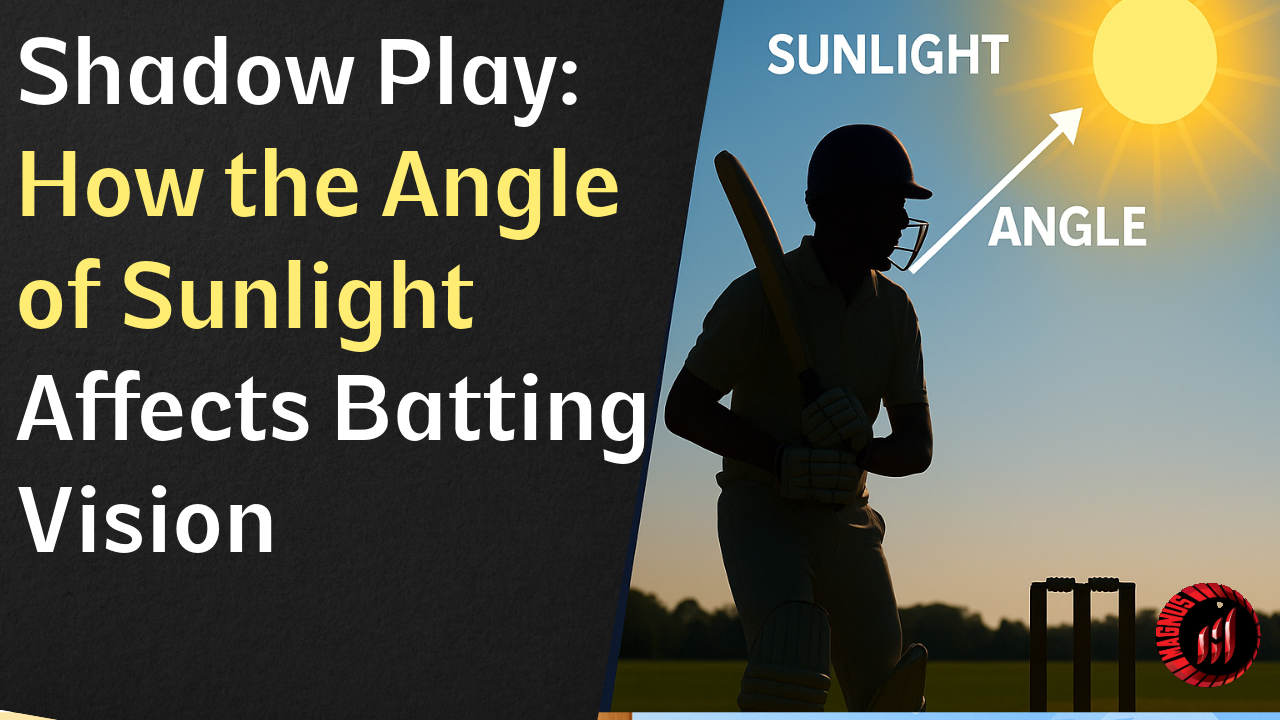In the game of cricket, milliseconds can define the difference between a cracking boundary and a clean bowled. While much attention is given to the quality of the pitch, the condition of the ball, or the type of bat, there's one factor that's often overlooked — sunlight.
More specifically, the angle of sunlight during different times of day can drastically affect how batters see and react to the ball. Welcome to Shadow Play, where science meets strategy and vision determines performance.
The Changing Light: Cricket as a Day Sport
Most forms of cricket — from school-level matches to ODIs and Tests — are played during daylight hours. But as the sun arcs across the sky, light intensity, direction, and shadow play all shift.
-
Morning sessions bring soft, low-angle light.
-
Midday means harsh overhead sun and minimal shadows.
-
Late afternoon brings slanted golden light and long shadows across the pitch.
These transitions matter — and here’s how.
1. Morning Light: Gentle Glare & Contrast Issues
In early matches, the sun is still low. This creates:
-
Strong glare when the batter faces the east
-
Soft shadows that can confuse depth perception
-
Low contrast between ball and pitch, especially with white or red balls
Batters often squint more in morning light, especially if the sun is rising from behind the bowler’s arm.
Impact: Timing is harder. Edges are more common. Early wickets often fall to simple visual misjudgments.
2. Midday Light: Sharp, Direct, and Clear
This is the “neutral zone” for most cricketers. Around noon:
-
Shadows are minimal
-
The sun is overhead, reducing eye strain from glare
-
Ball visibility is generally at its best
However, high sun can cause sweat to run into the eyes, or glare off helmets and white clothing, which still disrupts comfort and vision.
Impact: This is usually the easiest phase to bat, provided hydration and sun management are in check.
3. Late Afternoon: The Golden Trap
As the sun drops in the west, the light slants across the pitch again, creating:
-
Long shadows from fielders and stumps
-
Ball glare when facing the west
-
Difficulty judging bounce due to contrast between sunlight and shade
Fielding captains often switch fast bowlers to take advantage of low-light angles, especially when shadows begin falling across the pitch.
Impact: Eyes need to adapt constantly. Batters can misread slower balls or deliveries that dip out of shadow into light — or vice versa.
4. Shadow Lines on the Pitch: A Hidden Hazard
When one half of the pitch is in sunlight and the other in shade (especially under trees, stands, or uneven cloud cover), the human eye struggles to recalibrate quickly.
-
Fast bowlers moving from light into shade deceive perception
-
The ball appears to “jump” or “dip” due to sudden brightness change
Some batters train in indoor nets with artificial lighting to simulate this, but in open play, it remains a visual trap.
5. Gear Choices & Visual Strategy
To counter sunlight challenges, players adapt in small but significant ways:
-
Black or tinted sunglasses for fielders
-
Clear or light amber visors for helmet wearers
-
Dark inner linings on helmets to reduce upward glare
-
Eyeblack or tape under the eyes in T20 formats to block shine
Some pros also rotate their stance slightly or delay trigger movements to allow their eyes a moment longer to process the ball out of glare.
6. What Science Says
According to sports vision researchers:
-
Reaction time decreases by up to 20% when facing glare
-
Sudden brightness changes affect the pupil’s dilation response, which can last up to 0.4 seconds — a long time in cricket
-
Shadows disrupt the brain’s ability to gauge depth and distance accurately, particularly at speeds above 130 km/h
Cricket bat types, Cricket equipment in usa, Cricket equipment store, Cricket gloves, Cricket helmet, Cricket kit bags, Cricket retailers, Durable cricket gloves, English willow bats, Icc approved helmets., Kashmir willow cricket bat, Latest kashmir willow bat
